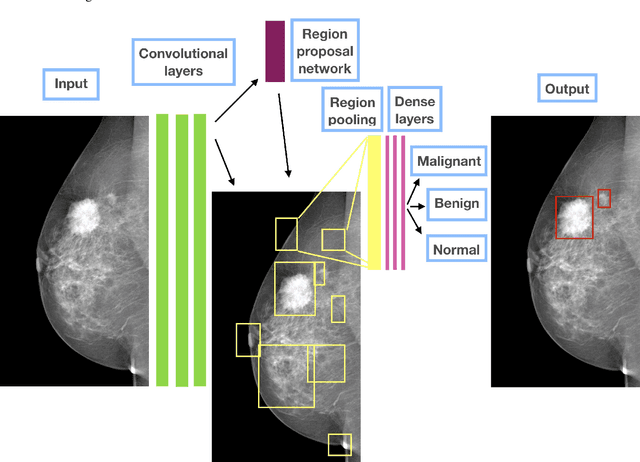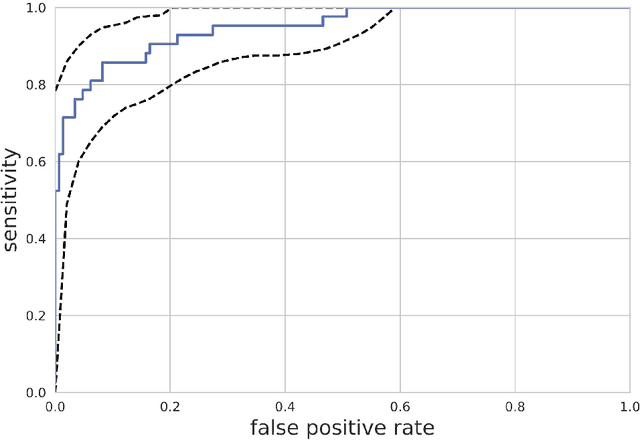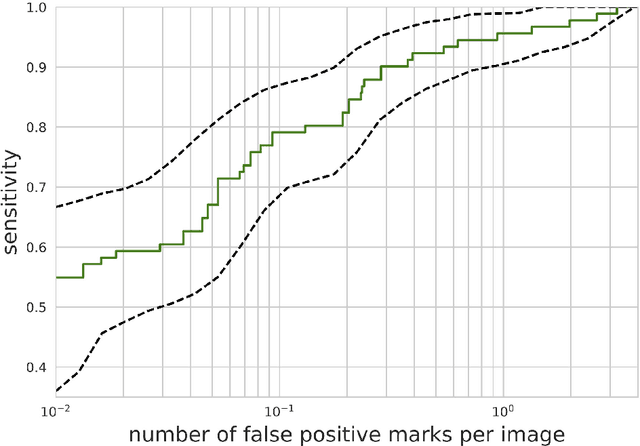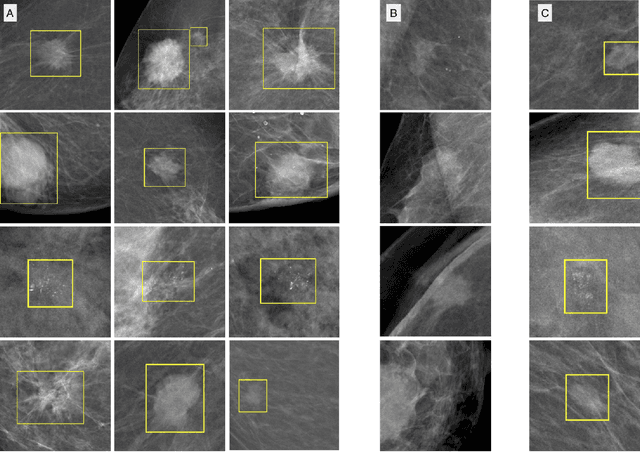Péter Pollner
Detecting and classifying lesions in mammograms with Deep Learning
Nov 09, 2017



Abstract:In the last two decades Computer Aided Diagnostics (CAD) systems were developed to help radiologists analyze screening mammograms. The benefits of current CAD technologies appear to be contradictory and they should be improved to be ultimately considered useful. Since 2012 deep convolutional neural networks (CNN) have been a tremendous success in image recognition, reaching human performance. These methods have greatly surpassed the traditional approaches, which are similar to currently used CAD solutions. Deep CNN-s have the potential to revolutionize medical image analysis. We propose a CAD system based on one of the most successful object detection frameworks, Faster R-CNN. The system detects and classifies malignant or benign lesions on a mammogram without any human intervention. The proposed method sets the state of the art classification performance on the public INbreast database, AUC = 0.95 . The approach described here has achieved the 2nd place in the Digital Mammography DREAM Challenge with AUC = 0.85 . When used as a detector, the system reaches high sensitivity with very few false positive marks per image on the INbreast dataset. Source code, the trained model and an OsiriX plugin are availaible online at https://github.com/riblidezso/frcnn_cad .
Comparing the hierarchy of keywords in on-line news portals
Jun 20, 2016Abstract:The tagging of on-line content with informative keywords is a widespread phenomenon from scientific article repositories through blogs to on-line news portals. In most of the cases, the tags on a given item are free words chosen by the authors independently. Therefore, relations among keywords in a collection of news items is unknown. However, in most cases the topics and concepts described by these keywords are forming a latent hierarchy, with the more general topics and categories at the top, and more specialised ones at the bottom. Here we apply a recent, cooccurrence-based tag hierarchy extraction method to sets of keywords obtained from four different on-line news portals. The resulting hierarchies show substantial differences not just in the topics rendered as important (being at the top of the hierarchy) or of less interest (categorised low in the hierarchy), but also in the underlying network structure. This reveals discrepancies between the plausible keyword association frameworks in the studied news portals.
 Add to Chrome
Add to Chrome Add to Firefox
Add to Firefox Add to Edge
Add to Edge